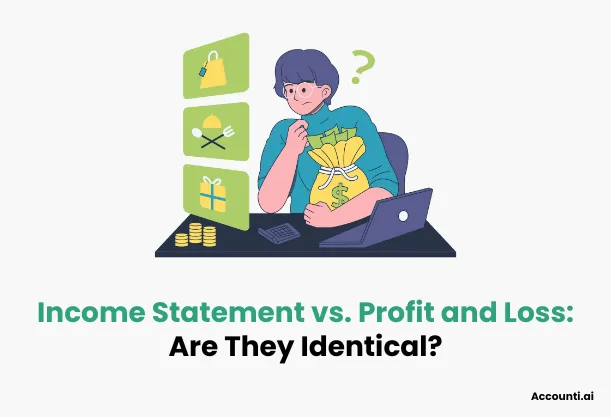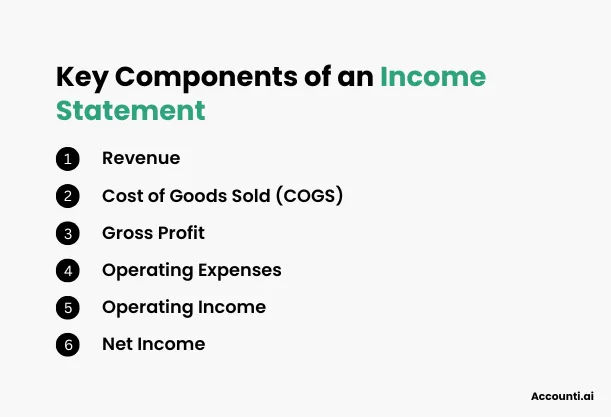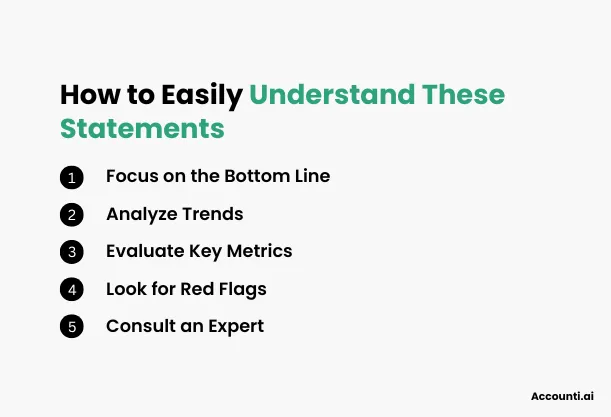
Income Statement vs. Profit and Loss: Are They the Same?
Financial jargon can be intimidating, especially if you’re new to the business
world. One of the most common points of confusion arises when people hear the terms
"Income Statement" and "Profit and Loss Statement" used interchangeably. But are
they really the same thing?
If you’re looking for clarity,
you’ve come to the right place! In this article, we’ll break everything
down in simple, conversational English so you can confidently navigate this topic.
What is an Income Statement?
Let’s start with the basics. An Income Statement is a financial document that summarizes a company’s revenues, expenses, and profits over a specific period, like a month, quarter, or year. Think of it as a snapshot of your business’s financial performance.
Purpose of an Income Statement
The main purpose of an income statement is to show whether a company is making or losing money. It helps stakeholders like business owners, investors, and creditors understand the company’s profitability.
Key Components of an Income Statement
Here’s what you’ll typically find on an income statement:

- Revenue: This is all the money a business earns from its core operations. For example, if you run a bakery, this would be sales from selling cakes and pastries.
- Cost of Goods Sold (COGS): These are the direct costs of producing the goods or services you sell. For our bakery example, this includes the cost of flour, sugar, and labor.
- Gross Profit: Calculated as Revenue - COGS. It shows how efficiently a company is producing its products.
- Operating Expenses: These are costs that keep the business running but aren’t directly tied to production. Think rent, utilities, and salaries.
- Operating Income: Gross Profit - Operating Expenses. This reflects the business’s core profitability.
- Net Income: The final profit after all expenses, taxes, and interest are deducted.
Example Structure of an Income Statement
|
Income Statement |
Amount ($) |
|
Revenue |
100,000 |
|
Cost of Goods Sold |
40,000 |
|
Gross Profit |
60,000 |
|
Operating Expenses |
20,000 |
|
Operating Income |
40,000 |
|
Taxes and Other Costs |
10,000 |
|
Net Income |
30,000 |
This format gives a clear breakdown of how the company’s revenue flows through the business.
What is a Profit and Loss Statement?
The Profit and Loss Statement (P&L), also known as an Income Statement, serves the same purpose: it details a company’s revenues, expenses, and profits over a specific time period. In many regions, the terms "Income Statement" and "Profit and Loss Statement" are used interchangeably.
Purpose of a Profit and Loss Statement
The P&L is a critical tool for business owners and investors. It provides insight into financial performance and helps assess how profitable the business is.
Key Components of a Profit and Loss Statement
A P&L statement typically includes:
- Revenue
- Expenses (both direct and indirect)
- Net Profit or Loss
The structure is nearly identical to the Income Statement, making it easy to confuse the two.
Example Structure of a Profit and Loss Statement
|
Profit and Loss Statement |
Amount ($) |
|
Revenue |
100,000 |
|
Expenses |
70,000 |
|
Net Profit (or Loss) |
30,000 |
Notice the similarities? It’s no surprise people think they’re the same!
Are They the Same?
So, here’s the million-dollar question: Are the Income Statement and Profit and Loss Statement the same? The short answer is yes, but with a few caveats.
Similarities
- Purpose: Both statements aim to show a company’s financial performance over a specific period.
- Structure: They include revenues, expenses, and profits, often formatted in a similar way.
- Users: Stakeholders like investors, lenders, and management rely on these documents to make informed decisions.
Differences
While they’re functionally identical, the terminology often varies depending on context:
- Regional Variations: In the U.S., "Income Statement" is more commonly used, while "Profit and Loss Statement" is popular in the U.K. and other regions.
- Industry Preferences: Certain industries or organizations might prefer one term over the other due to tradition or policy.
Importance of Understanding Financial Statements
Whether you’re a business owner, investor, or just someone interested in finance, understanding these statements is crucial.
For Business Owners
Income statements and P&L statements help you:
- Monitor profitability.
- Identify areas where you can cut costs.
- Plan for growth or manage downturns.
For Investors
Investors use these statements to:
- Evaluate a company’s profitability.
- Assess risk and return on investment.
- Compare performance across different companies.
For Lenders
Banks and creditors review these documents to decide whether to approve loans or credit lines.
Comparative Analysis: Income Statement vs. Profit and Loss
Let’s put everything into a side-by-side comparison to make it even clearer.
|
Aspect |
Income Statement |
Profit and Loss Statement |
|
Purpose |
Shows financial performance. |
Shows financial performance. |
|
Key Components |
Revenue, expenses, net income. |
Revenue, expenses, net profit/loss. |
|
Terminology |
Common in the U.S. |
Common in the U.K. |
|
Use |
Used for internal and external reporting. |
Used for internal and external reporting. |
|
Users |
Business owners, investors, lenders. |
Business owners, investors, lenders. |
Key Takeaways
- They’re nearly identical in structure and purpose.
- The terms are interchangeable in most contexts.
- Know your audience when using either term to avoid confusion.
How to Interpret These Statements
Reading and understanding financial statements doesn’t have to be daunting. Here are some tips to make sense of them:

- Focus on the Bottom Line
The net income figure tells you whether the business is profitable or not. - Analyze Trends
Compare statements over time to identify growth, stability, or decline. - Evaluate Key Metrics
Metrics like operating margin, gross profit margin, and net margin are essential for assessing a company’s profitability and operational efficiency. Calculating operating margin accurately can provide deeper insights into your business. - Look for Red Flags
Excessive expenses, declining revenues, or inconsistent reporting could indicate trouble. - Consult an Expert
If you’re still unsure, don’t hesitate to ask an accountant or financial advisor.
Conclusion
So, are the Income Statement and Profit and Loss Statement the same? In essence, yes. Both serve to report a company’s financial performance and provide critical insights for decision-making. However, the terminology might differ depending on where you are or who you’re talking to.
Understanding these statements is vital for anyone involved in business or finance. They not only reveal how a company is performing but also guide future strategies. Whether you call it an Income Statement or a Profit and Loss Statement, the goal is the same: to understand and improve financial health.
FAQs
Is the income statement the same as the profit and loss report?
Yes, the income statement and the profit and loss (P&L) report are essentially the same financial document. Both terms are used interchangeably to describe a statement that summarizes a company's revenues, expenses, and profits or losses over a specific period. This report provides insights into a company's financial performance and profitability.
Is a P&L statement also known as an income statement?
Yes, the P&L statement, which stands for profit and loss statement, is also known as the income statement. These terms are used interchangeably in accounting to refer to the financial statement that details a company's revenues, expenses, and net income over a particular period.
Is the income statement another name for the profit and loss account?
Yes, the income statement is another name for the profit and loss account. Both terms refer to the same financial statement that outlines a company's financial performance, including revenues, expenses, and net profit or loss during a specific period.
Is a profit and loss account the same as a financial statement?
A profit and loss account is a type of financial statement. While the term "financial statement" encompasses various reports, including the balance sheet and cash flow statement, the profit and loss account specifically details a company's revenues, expenses, and profits or losses over a certain period.
What is the difference between an income and expenditure account and a profit and loss account?
An income and expenditure account is typically used by non-profit organizations to record their income and expenses, focusing on the net surplus or deficit for a period. In contrast, a profit and loss account is used by for-profit businesses to detail their revenues, expenses, and net profit or loss. The primary difference lies in their application: non-profits use income and expenditure accounts, while for-profit entities use profit and loss accounts.
What do you mean by income statement?
An income statement, also known as a profit and loss statement, is a financial document that summarizes a company's revenues, expenses, and profits or losses over a specific period. It provides insights into the company's financial performance and profitability, helping stakeholders make informed decisions.

 Rohit Kapoor
Rohit Kapoor

